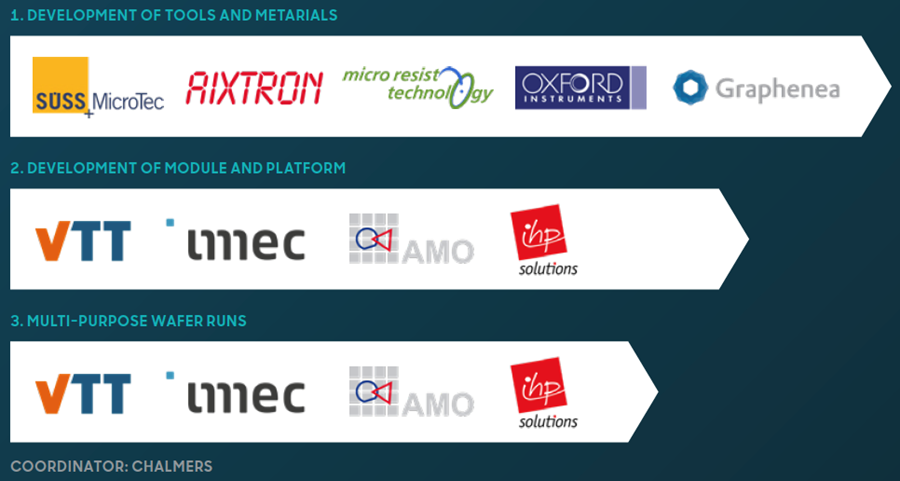2D-EPL: Management

The goal of the Management Work Package is to implement the 2D Experimental Pilot Line (2D-EPL) project in an efficient manner. It plans and coordinates the project’s actions, but also facilitates the 2D-EPL’s interactions and collaborations with the Graphene Flagship’s Core project and with the European Commission.
This year’s progress
In this first year of the project, our work in establishing a foundation for the 2D-EPL has been critical. We began with an internal kickoff meeting with introductions from all the work package leaders to ensure that everyone started from the same understanding of the tasks at hand. The Industrial Advisory Board members, who provide the project with valuable industry insights, were also invited to join the kickoff and share their perspectives on the importance of the project.
The work package was able to draw on its experience from managing the Graphene Flagship core project to effectively establish the internal tools necessary to run the 2D-EPL efficiently and exploit synergies between partners. The 2D-EPL’s first European Commission review was also managed smoothly, benefiting from Chalmers’ ten years of experience running the Graphene Flagship.

The 2D-EPL organisational chart
Collaboration
The interactions and synergies created by the Graphene Flagship are at the heart of its success. By bringing diverse partners working on similar problems together, we help them to solve the problems of how to apply graphene and other layered materials more easily. Thus, it was only natural for the European Commission to create the 2D-EPL within the framework of the Graphene Flagship where it could benefit from the knowledge and resources of the core project and share its successes in return.
The timing is also critical. Many applications and products rely on semiconductor chips, and the global shortage of these chips has exposed a weakness in Europe’s industrial ecosystem. Europe has an overall global semiconductors production market share of less than 10% and is heavily dependent on third-country suppliers. The European Commission has made a commitment to remedy this shortcoming with the European Chips Act. The work of the 2D-EPL will not only create more infrastructure for the creation of semiconductor chips in Europe, but it can also improve the state of the art. Combining graphene and 2D materials with silicon could enhance the potential of electronic technologies traditionally based on silicon.
What’s in store
Over the next year, the Management Work Package will continue to keep the 2D-EPL on course. As the multi-project wafer runs launch, new challenges and opportunities will arise.
